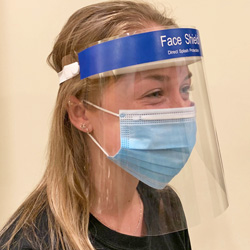
Check out Safety Emporium for your N95, N99, and face shield needs.
(Note: This post is 15 years old and may contain outdated information.)
Date: Thu, 15 Jul 2010 11:48:52 -0600
Reply-To: DCHAS-L Discussion List <DCHAS-L**At_Symbol_Here**LIST.UVM.EDU>
Sender: DCHAS-L Discussion List <DCHAS-L**At_Symbol_Here**LIST.UVM.EDU>
From: Alan Hall <ahalltoxic**At_Symbol_Here**MSN.COM>
Subject: Re: Help with high school chemical clean-up
In-Reply-To: <FF70A3D197478C4A8E079799AD76FBEC0ECD4E32**At_Symbol_Here**gimli.morehead-st.edu>
Kay et al,
My daughter who teaches 7-12 science had this problem at her last school,
a small rural school in Montana.
We contacted the State Superintendent of Schools in the Governor's Office
, who referred the issue to the Montana Department of the Environment,
who were to to contact the local school superintendent and send a former hi
gh school science teachr turned chemical safety specialist out to make an a
ssay and recommendations. I don't know the outcome, but at least
some action was taken. I cannot speak to schools in KY and OH.
There is a recent article in J-CHAS about lists of what chemicals should an
d should not be in secondary school laboratories. It would be good
to check your recent back issues and read this paper.
Alan
Alan H. Hall, M.D.
Medical Toxicologist
Date: Thu, 15 Jul 2010 10:54:08 -0400
From: r.calhoun**At_Symbol_Here**MOREHEADSTATE.ED
U
Subject: [DCHAS-L] Help with high school chemical clean-up
To: DCHA
S-L**At_Symbol_Here**LIST.UVM.EDU
&nb
sp; I=92m
helping with a workshop for high school chemistry teachers, and several
say they have stockrooms containing old, or excess, chemicals which the
y need to get rid of. I remember some kind of program to help with
this, especially for small schools with no funds for a clean-up.
However, I don=92t remember the particulars. Can someone steer me
in the right direction. The schools in questions are in Kentucky a
nd Ohio.
&nb
sp; Thank
s, for your assistance.
Kay Calhoun
Previous post | Top of Page | Next post
